
Growing Echinacea: The Plant with Medicinal Benefits
Cynthia KolfEchinacea, commonly known as coneflower, is a vibrant and resilient plant with striking purple petals that add beauty to any garden while offering a host of medicinal benefits.
Native to North America, echinacea has a rich history of use among native Americans, and its popularity has only grown over the years.
For Florida gardeners seeking to add a splash of color to their landscape, or preppers building a self-sufficient homestead, echinacea is a plant that deserves a prominent place in your garden and your life.
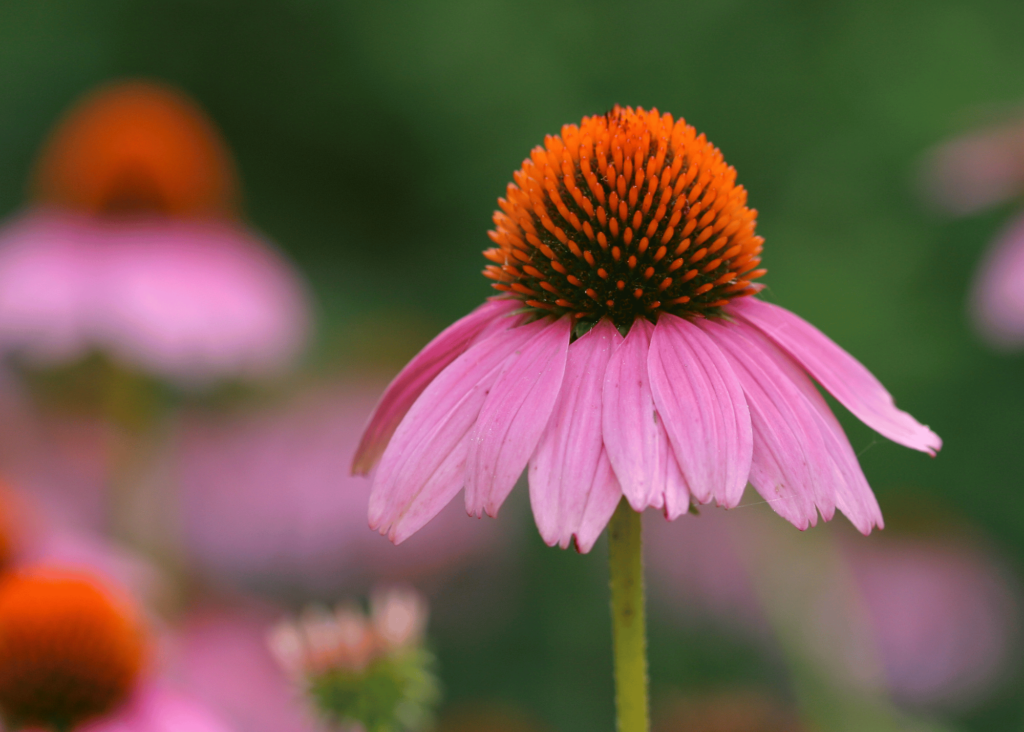
Echinacea Species
There are nine recognized species of echinacea, each with its unique characteristics, though not all are commonly used in gardens or for medicinal purposes. The species include:
-
Echinacea purpurea (Purple Coneflower)
-
Echinacea angustifolia (Narrow-Leaf Coneflower)
-
Echinacea pallida (Pale Purple Coneflower)
-
Echinacea paradoxa (Yellow Coneflower)
-
Echinacea atrorubens (Topeka Purple Coneflower)
-
Echinacea laevigata (Smooth Coneflower)
-
Echinacea simulata (Wavy-Leaf Purple Coneflower)
-
Echinacea sanguinea (Sanguine Purple Coneflower)
-
Echinacea tennesseensis (Tennessee Coneflower)
Best Species for Medicinal Purposes
The most commonly used species for medicinal purposes are:
-
Echinacea purpurea (Purple Coneflower): This is the most widely cultivated species and is often used in herbal remedies. It is known for its immune-boosting properties and is commonly found in teas, tinctures, and supplements. Echinacea purpurea is the most studied species and is considered highly effective for immune support.
-
Echinacea angustifolia (Narrow-Leaf Coneflower): Another species highly valued for its medicinal properties, Echinacea angustifolia is often used in traditional medicine for its potent immune-boosting effects. It is particularly noted for its ability to combat colds, flu, and other infections.
-
Echinacea pallida (Pale Purple Coneflower): While less common than Echinacea purpurea and Echinacea angustifolia, Echinacea pallida is also used for its medicinal properties. It is believed to have similar benefits, though it is less potent and less frequently used in commercial products.
For medicinal purposes, Echinacea purpurea and Echinacea angustifolia are the best choices due to their well-documented effectiveness and availability.
Echinacea purpurea, in particular, is the most versatile and widely used species in herbal medicine, making it a reliable option for those looking to harness the plant's health benefits.
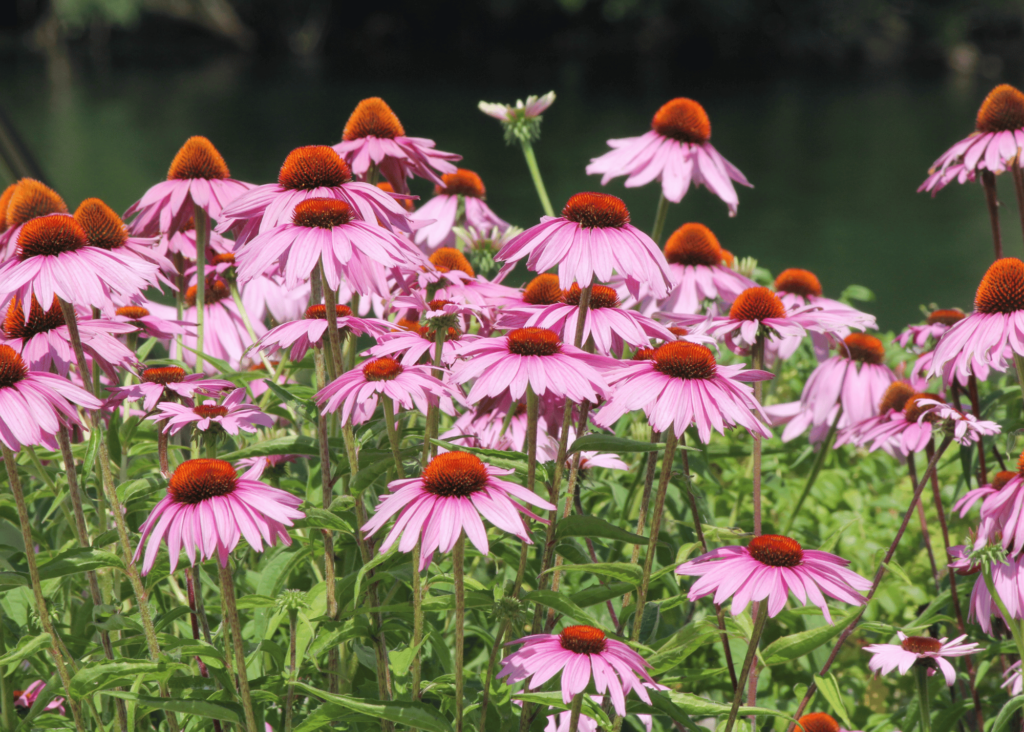
Growing Echinacea: A Resilient and Low-Maintenance Plant
Echinacea is known for its hardiness and ability to thrive in various conditions, making it an ideal choice for both seasoned gardeners and beginners. Its ability to attract pollinators like bees and butterflies also makes it a valuable addition to any garden ecosystem.
Choosing the Right Spot
Sunlight
Echinacea thrives in full sun, requiring at least six hours of direct sunlight each day to produce its best blooms. In Florida’s sunny climate, finding a bright spot in your garden shouldn’t be difficult. However, some partial shade during the hottest part of the day can prevent the flowers from wilting in extreme heat.
Soil
Although echinacea is tolerant of a wide range of soil types, it prefers well-drained soil rich in organic matter. Florida’s sandy soil is naturally well-drained, which is perfect for echinacea. However, amending the soil with compost or organic mulch will improve its fertility and water retention, leading to healthier plants.
Space
Echinacea plants can grow between 2 and 4 feet tall and wide, depending on the variety. When planting, consider the mature size of the plant to avoid overcrowding, which can lead to poor air circulation and increased susceptibility to diseases.
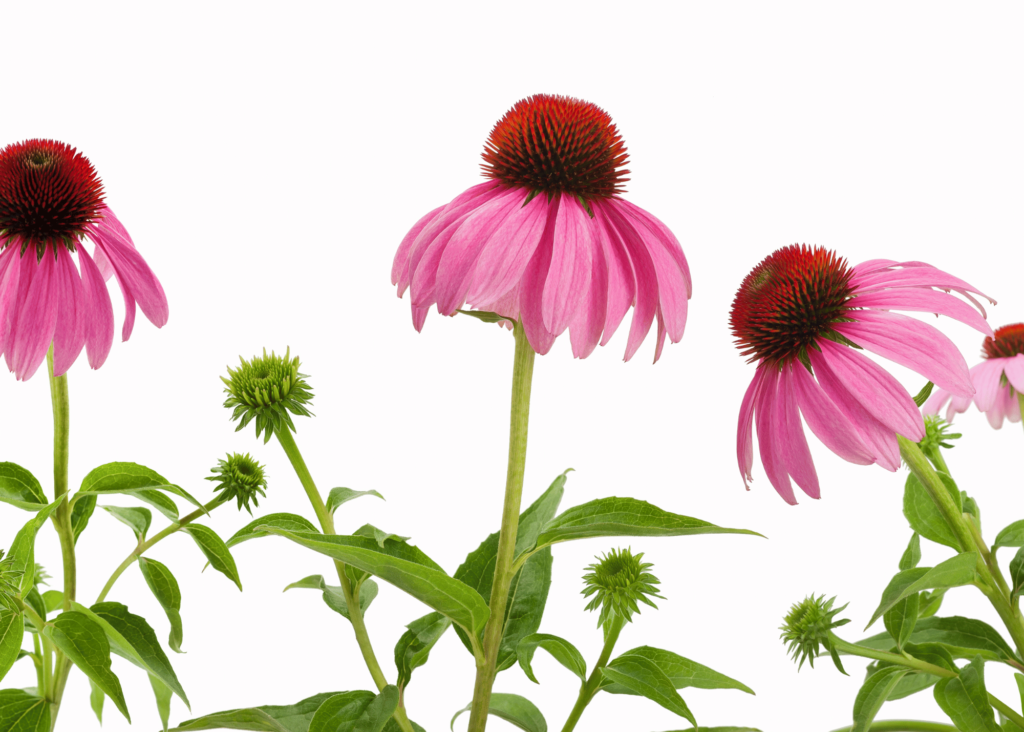
Planting Your Echinacea
Timing
Throughout the United States, the best time to plant echinacea is in the spring when the risk of frost has passed.
In Florida's Zone 10A, you can plant echinacea almost year-round, but timing can affect its establishment and growth. Here's some guidance:
Planting Now (Late Summer to Early Fall)
-
Pros: Planting echinacea in late summer or early fall gives the plants time to establish roots before the cooler winter temperatures. This can lead to stronger growth in the spring.
-
Cons: You'll need to monitor watering carefully, especially if the weather remains hot. Newly planted echinacea will need consistent moisture to get established.
Planting in February (Late Winter to Early Spring)
-
Pros: February is a great time to plant echinacea in Zone 10A because the cooler weather makes it easier for the plants to establish themselves without the stress of extreme heat. As the temperatures warm up, the plants will start growing more vigorously.
-
Cons: Planting in February means you'll need to wait longer to see the plants bloom, as they will be focused on establishing roots first.
Recommendation
-
If you're ready to plant now, go ahead and plant in late summer or early fall, but be prepared to water regularly.
-
If you'd prefer to wait, February is also an excellent time to plant, offering a more forgiving climate for establishing echinacea without as much need for watering.
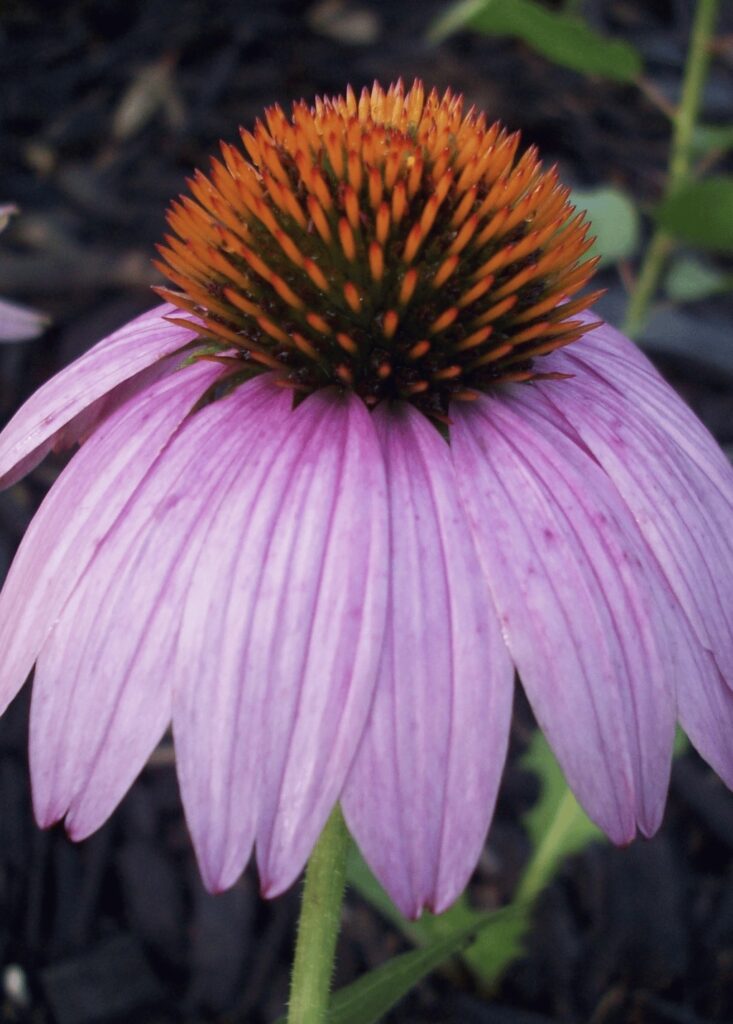
Depth
When planting echinacea seeds, sow them about ¼ inch deep. For transplants, ensure that the seedlings are planted at the same depth as they were growing in their pots. Planting too deeply can stress the plant and hinder its growth.
Spacing
Space your plants 12 to 18 inches apart. This spacing provides ample room for growth, allowing for adequate airflow, which is crucial in Florida’s humid climate to prevent fungal issues.
Care and Maintenance
Watering
Once established, echinacea is drought-tolerant, making it a low-maintenance choice for gardeners.
However, during the first growing season, regular watering is crucial to help the plants establish a strong root system.
In Florida, where dry spells can occur even in the rainy season, it’s important to monitor soil moisture and water when necessary.
Fertilizing
Echinacea is not a heavy feeder and typically thrives without additional fertilizer. If you decide to fertilize, use a balanced, slow-release fertilizer in the spring to provide nutrients throughout the growing season.
Over-fertilizing can lead to excessive foliage growth at the expense of flower production.
Deadheading
Regularly remove spent flowers to encourage new blooms and prevent the plant from self-seeding excessively.
However, if you want to allow natural reseeding or attract birds like goldfinches, leave some seed heads intact at the end of the growing season.
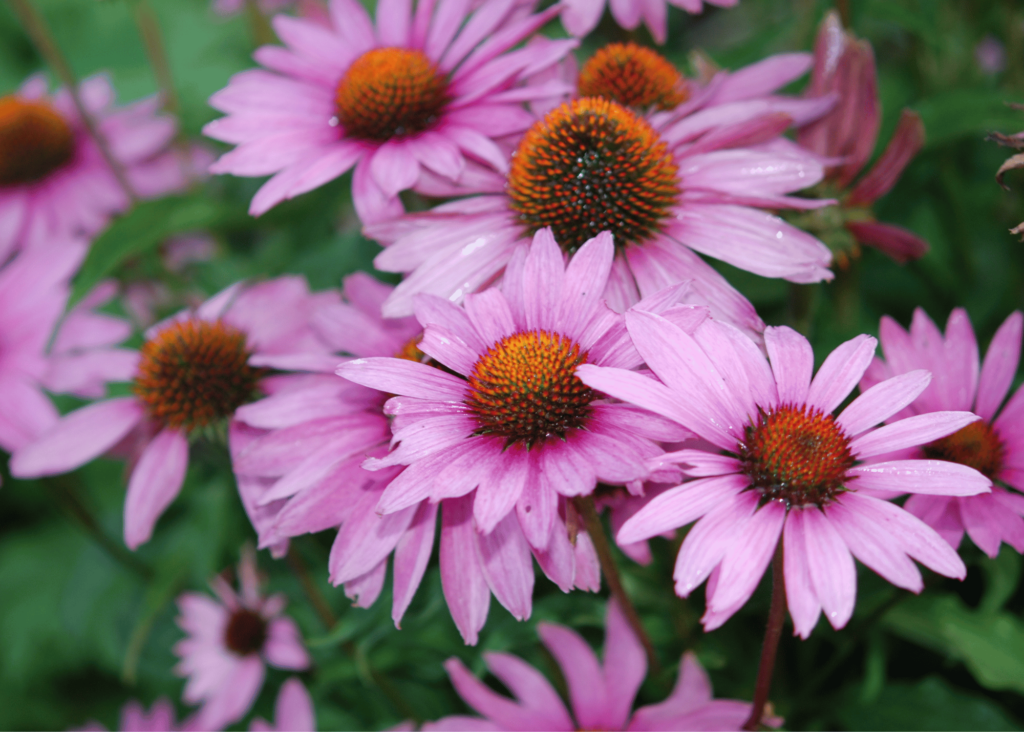
Division
Every 3 to 4 years, it’s beneficial to divide mature echinacea plants to prevent overcrowding and rejuvenate the plants. This is best done in the fall or early spring when the plants are dormant. Dig up the entire clump, divide it into smaller sections with a sharp spade, and replant them immediately.
Harvesting Echinacea: A Bounty of Benefits
Echinacea is not only a garden beauty but also a versatile herb with numerous culinary and medicinal uses. Each part of the plant—flowers, leaves, and roots—can be harvested and utilized in various ways.
Harvesting Flower Heads
Timing
For the best flavor and medicinal properties, harvest echinacea flowers when they are in full bloom. The vibrant purple petals should be fully open, and the central cone should be firm and bristly.
Use
Fresh echinacea flowers can be added to salads for a pop of color or brewed into teas that are both flavorful and health-boosting. The petals can also be dried and stored in an airtight container for later use, making them a convenient addition to your herbal pantry.
Harvesting Leaves
Timing
Echinacea leaves can be harvested at any time during the growing season, though they are most potent before the plant flowers. Younger leaves are more tender and have a milder flavor, while older leaves are more robust.
Use
Like the flowers, echinacea leaves can be used fresh or dried. They are commonly used in teas, either alone or blended with other herbs, to support immune health.
Dry the leaves by spreading them out in a single layer on a drying rack or screen in a well-ventilated area, away from direct sunlight.
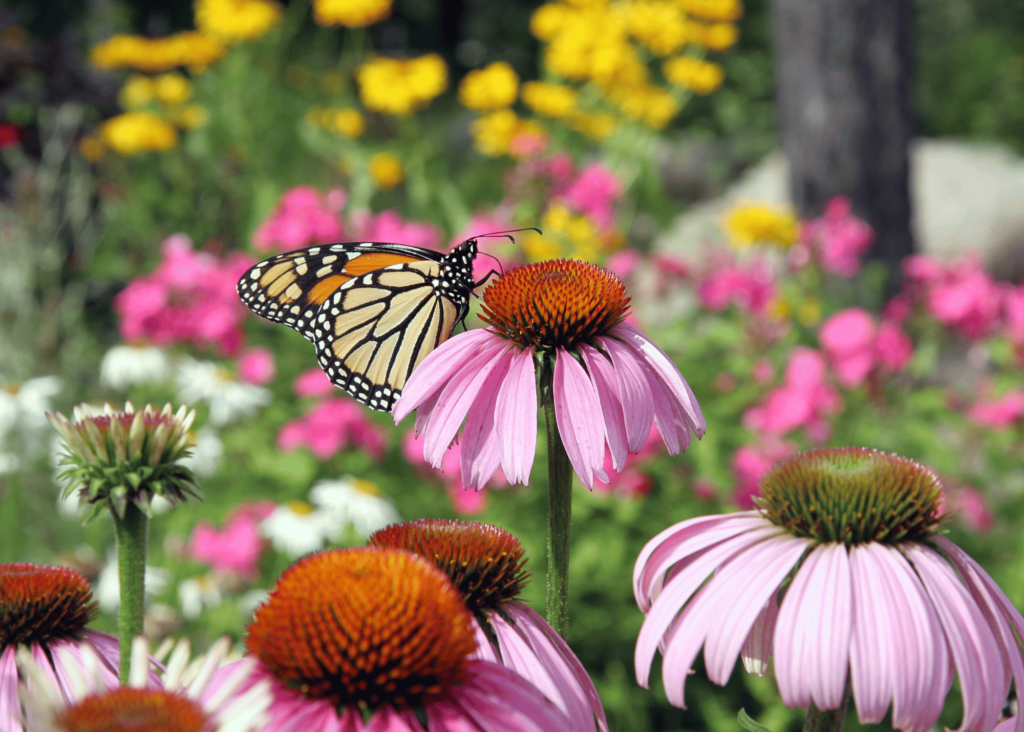
Harvesting Roots
Timing
The roots of echinacea are typically harvested in the fall, after the plant has gone dormant. This is when the roots have accumulated the most medicinal compounds.
Use
Echinacea roots are known for their strong medicinal properties and are often used to make tinctures, extracts, and herbal supplements.
To harvest, dig up the roots carefully, clean them thoroughly, and cut them into small pieces before drying.
Once dried, the roots can be stored for long-term use or used immediately to make tinctures.
Using Echinacea: Nature’s Medicine Cabinet
Echinacea has been celebrated for centuries as a powerful herb with numerous health benefits. Modern research has validated many of its traditional uses, particularly in supporting immune health.
The main active ingredients in echinacea that contribute to its medicinal properties are a combination of compounds rather than a single ingredient. These compounds include:
-
Alkylamides: These are thought to be one of the most important active components in echinacea. They have anti-inflammatory properties and can modulate the immune system.
-
Polysaccharides: These are complex carbohydrates that can stimulate the immune system by activating white blood cells, particularly macrophages, which are crucial in defending the body against pathogens.
-
Cichoric Acid: This is a type of phenolic compound found primarily in Echinacea purpurea. Cichoric acid is believed to have antioxidant properties and contributes to echinacea's ability to boost the immune system.
-
Echinacoside: Found predominantly in Echinacea angustifolia and Echinacea pallida, echinacoside is another phenolic compound with antioxidant and anti-inflammatory effects.
-
Glycoproteins: These molecules can enhance immune response by stimulating the activity of certain immune cells, such as natural killer cells and T-lymphocytes.
-
Flavonoids: These are plant compounds with antioxidant properties, which can help reduce inflammation and protect cells from oxidative stress.
These compounds work together to provide echinacea's health benefits, such as immune support, anti-inflammatory effects, and potential antiviral activity.
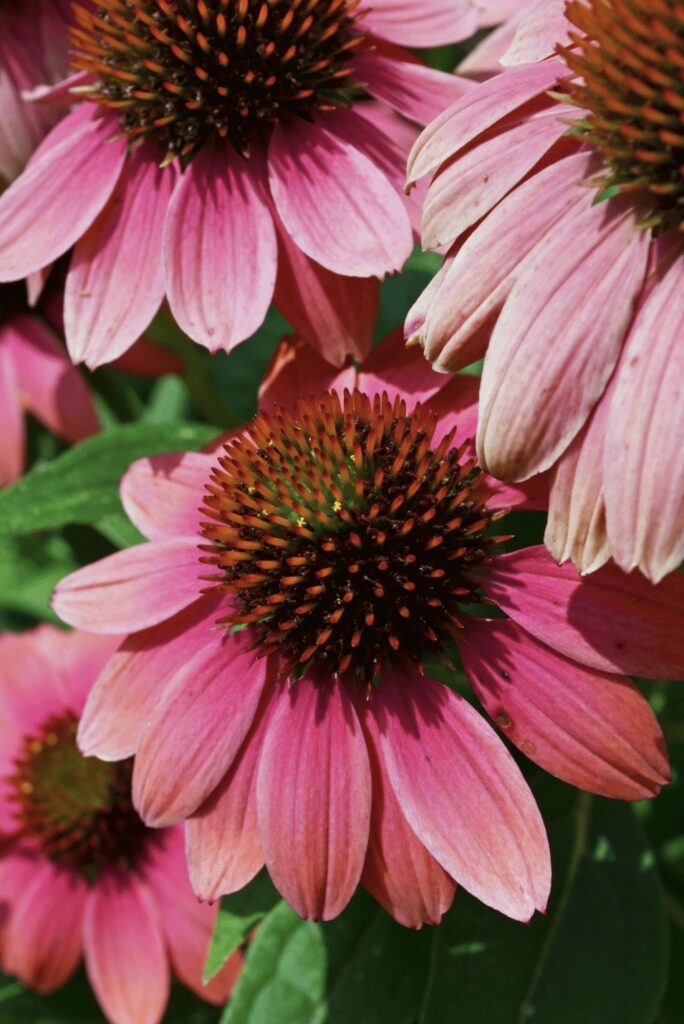
Common Uses
Immune Booster
Echinacea is widely used as a preventative measure during cold and flu season. It is believed to stimulate the immune system, helping the body fend off infections. Many people take echinacea supplements or teas at the first sign of a cold to reduce the severity and duration of symptoms.
Cold and Flu Relief
Studies suggest that echinacea can reduce the duration of cold symptoms and may help alleviate some of the discomfort associated with the flu. It’s often combined with other immune-supporting herbs like elderberry and ginger for added effectiveness.
Wound Healing
Echinacea’s antimicrobial and anti-inflammatory properties make it useful in wound healing. It can be applied topically as a poultice or ointment to minor cuts, scrapes, and insect bites to promote faster healing and reduce the risk of infection.
Skin Conditions
Echinacea is sometimes used in topical treatments for skin conditions like eczema, psoriasis, and acne. Its soothing properties can help reduce inflammation and redness, making it a popular ingredient in natural skincare products.
Important Note
While echinacea is generally considered safe for most people, it’s important to use it with caution. Some individuals may experience allergic reactions, particularly those with sensitivities to plants in the daisy family (Asteraceae).
Additionally, if you are pregnant, breastfeeding, or have a compromised immune system, consult with a healthcare provider before using echinacea, especially in medicinal amounts.
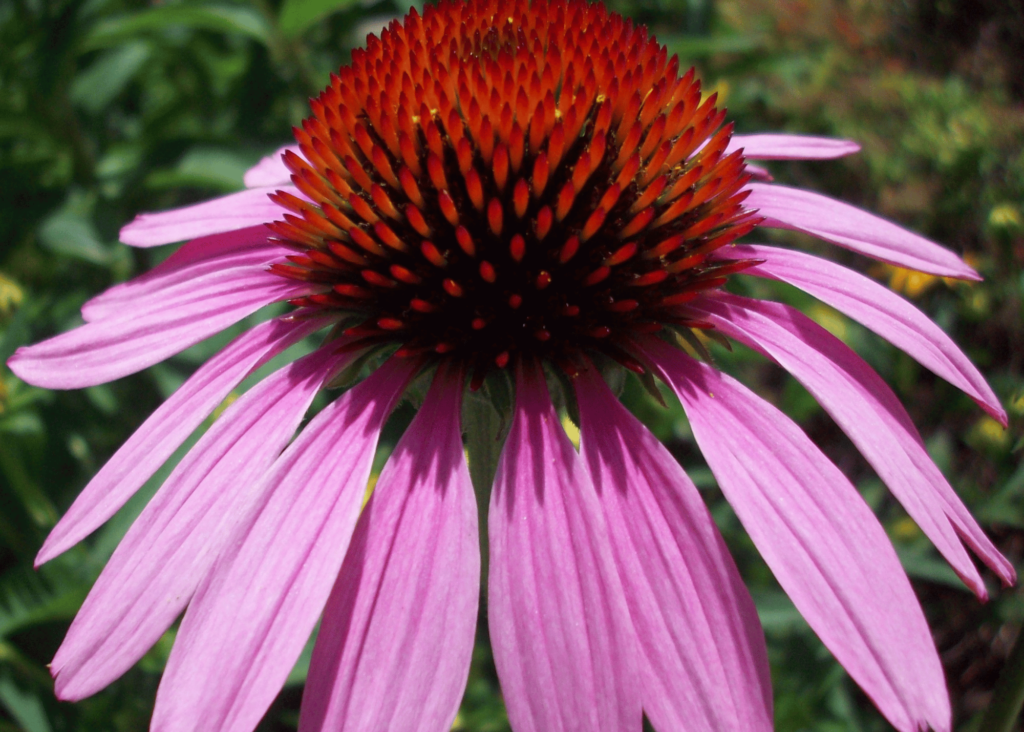
Conclusion: A Versatile and Valuable Plant
Growing echinacea is a rewarding experience that offers both aesthetic and practical benefits.
Its vibrant blooms will brighten your garden, while its medicinal properties can enhance your health and well-being.
Whether you’re a Florida gardener looking to cultivate a resilient and beautiful garden or a prepper seeking to build a self-sufficient homestead, echinacea is a plant that delivers on all fronts.
With minimal care, this garden gem can become a staple in your landscape and your survival toolkit.

Explore More Medicinal Herbs
If you found this article on echinacea helpful, be sure to check out these other articles in my medicinal herb series:
Each month, I dive into a different medicinal herb, exploring its benefits, how to grow it, and ways to use it in your daily life. Stay tuned for more!
Additional Resources:
-
Homesteading Secrets: Echinacea: The Must-Grow Herb to Supercharge Immunity!
-
Permaculture Plants: Growing Echinacea
-
The Traditional Homestead: Growing and Using Echinacea: A Medicinal Herb Guide
